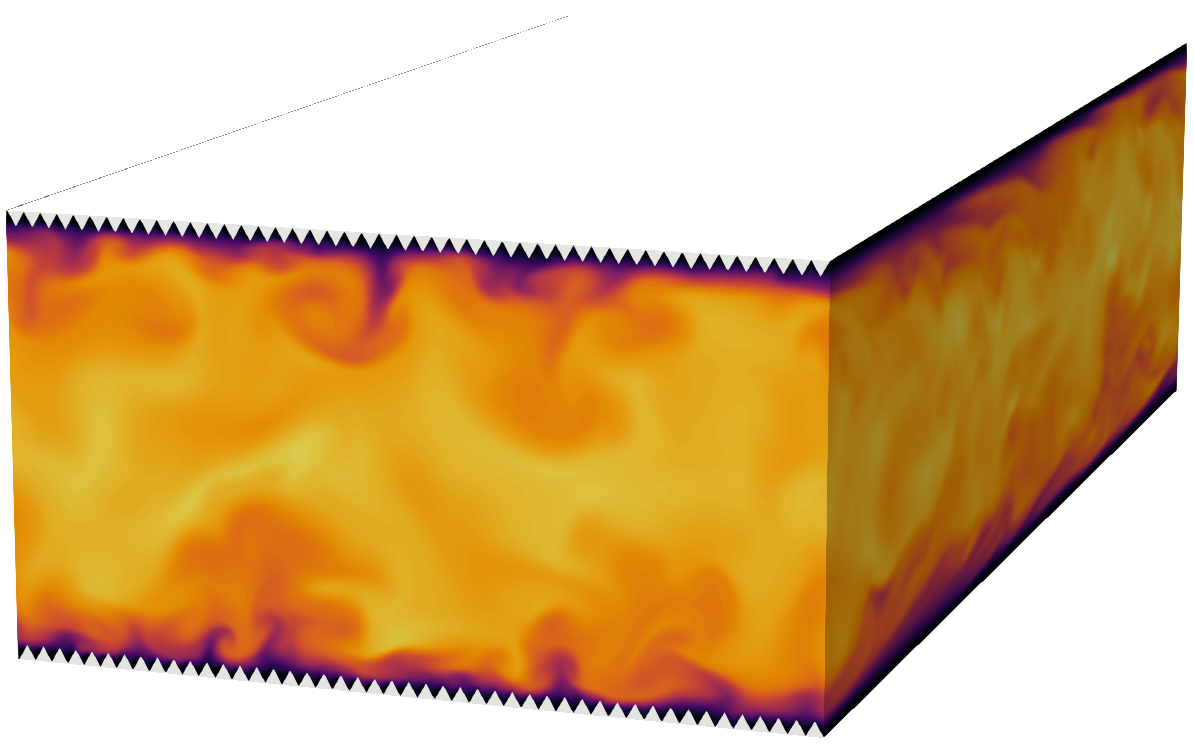Turbulent secondary motions over spanwise heterogeneous surfaces
- contact:
- funding:
DFG
- startdate:
November 2024
- enddate:
October 2027
In many technical applications, flows are bounded by walls, and their interaction occurs through a turbulent boundary layer. The surface properties of the walls, such as roughness, significantly influence the momentum and heat exchange with the fluid.In general, the Reynolds analogy describes the relationship between friction and heat transfer, where an increase in the Reynolds number leads to proportional increases in both quantities. However, when rough walls are considered, the analogy breaks down unfavorably due to small recirculation areas originating downstream the roughness elements. In such cases, the increase in friction exceeds the increase in heat transfer.
The objective of this project is to investigate specific types of surface roughness, such as ribbed structured surfaces, which could potentially lead to a favorable breakdown of the Reynolds analogy. This means that these configurations could enhance heat transfer without a corresponding increase in friction, when comparing them to smooth walls. This is possible because such surfaces do not generate flow reversal areas and pressure drag thanks to their alignment with the mean flow. Preliminary studies have shown that surfaces with structures oriented in the flow direction can, depending on their size, generate either coherent large-scale motions in the streamwise direction or instantaneous, spanwise rollers. In some cases, these flow features lead to increases in the heat transfer coefficient that exceed those related to friction. This study will use Direct Numerical Simulations to investigate the mentioned surfaces in turbulent channel flows at moderate Reynolds numbers. It aims to measure the Reynolds analogy factor in various geometrical configurations and assess whether a favorable breakdown of the analogy can be achieved. Such a discovery could lead to the adoption of these structured surfaces in numerous technical applications.

